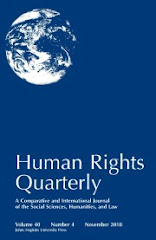The African Court on Human and Peoples’ Rights (ACtHPR) is uniquely situated to pursue human rights integration when construing the African Charter on Human and Peoples’ Rights (African Charter). This is due to distinctive features pertaining to the ACtHPR’s mandate and the text of the African Charter. This chapter argues that human rights integration is fostered by, and conditioned to, the drafting and design of a human rights treaty. Moreover, human rights integration should not be regarded as a single interpretative argument, but rather as a set of different, possible arguments depending on the explicit and implicit choices made in the process of interpretation.
The analysis shows how human rights integration can and should be relevant in supporting convergence on a regional and/or universal level (or both). In the case of the ACtHPR, human rights integration highlights and justifies different arguments and interpretative directions concerning the advancement of an African human rights corpus juris and/or the convergence of the African Charter with other regional and universal human rights treaties. However, at the same time, divergence in treaty design should be understood as contextual difference and, consequently, the pursue of human rights integration should weigh this appropriately in legal reasoning. The chapter concludes with a few remarks on how the ACtHPR needs to “calibrate” its case law in order to develop the distinctive features of the African Charter and construe an African human rights corpus juris, on the one hand, and embed these features in international (human rights) law, on the other hand.
Wednesday, October 31, 2018
Rachovitsa: The African Court on Human and Peoples' Rights: A Uniquely Equipped Testbed for (the Limits of) Human Rights Integration?
Adamantia Rachovitsa (Univ. of Groningen - Law) has posted The African Court on Human and Peoples' Rights: A Uniquely Equipped Testbed for (the Limits of) Human Rights Integration? (in Human Rights Tectonics: Global Dynamics of Integration and Fragmentation, E. Bribosia, I. Rorive, & A.M. Correa eds., forthcoming). Here's the abstract:





